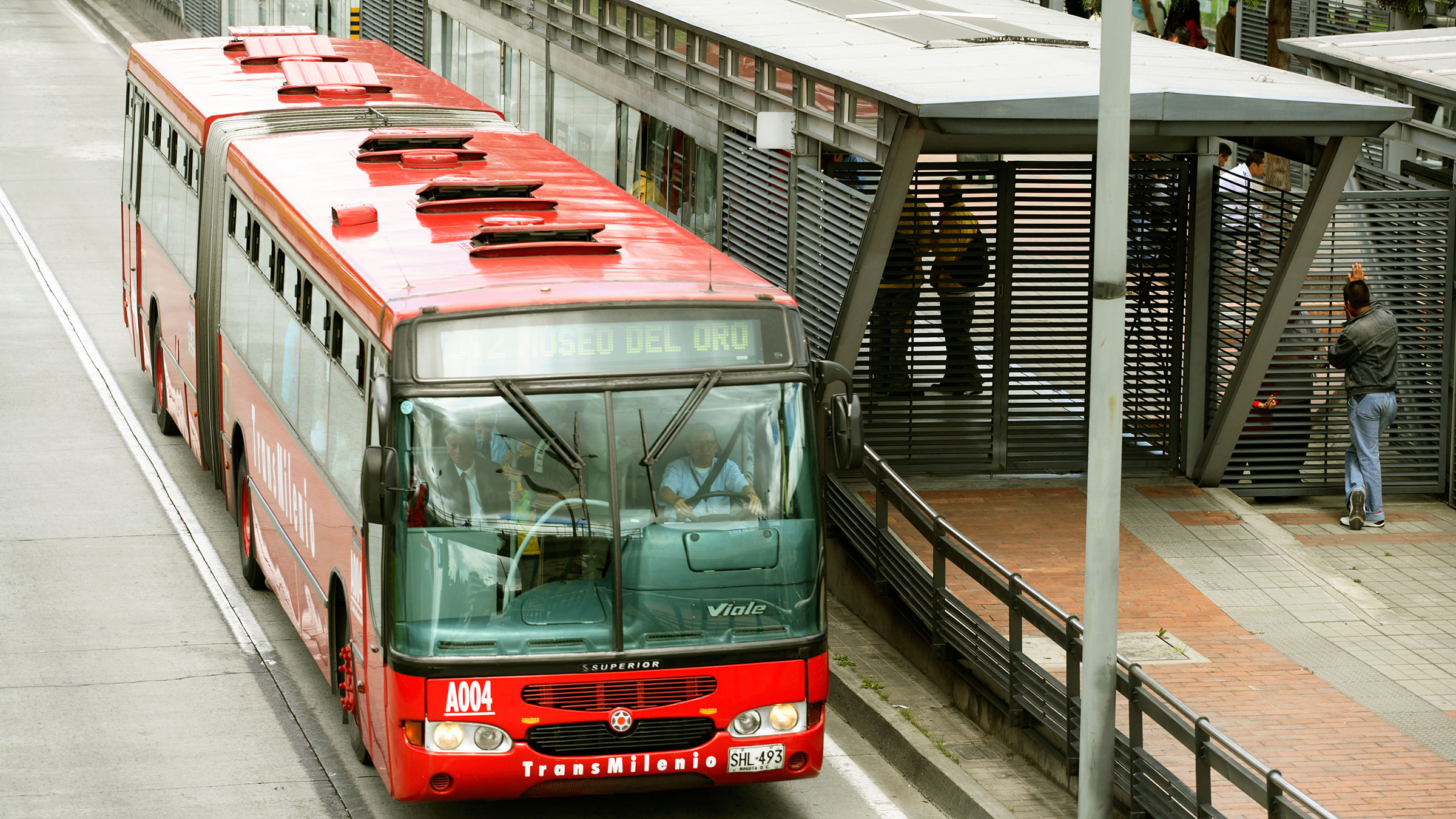Climate impact
The TransMilenio bus rapid transit (BRT) system in Bogotá transports 565 million passengers a year. BRT replaces trips by regular buses and, to a lesser extent, private cars and taxis, resulting in emission savings of 0.6 Mt a year.
BRT can be scaled up to other cities with more than one million inhabitants in middle-income countries. This would reduce emissions by 11 to 38 Mt in 2030.
BRT is part of broader transit-oriented development (TOD) that involves high-density walkable districts, biking facilities, fuel-efficiency standards and disincentives to use cars. The total emission impact of TOD programmes can be significantly larger than that of BRT alone, but providing reliable estimates is more challenging.

Success factors
BRT requires dedicated bus lanes. Stops and busways are typically positioned in the middle of roads and fares are collected off-board, ensuring fast and frequent operations.
The first phase of the TransMilenio network opened in 2000. Today there are 11 corridors through the city, stretching to a combined 112 kilometres. Emissions from BRT are lower than from regular buses or private vehicles because of high occupancy rates and efficient driving conditions on dedicated lanes.
The BRT system in Bogotá was the first in Colombia and is being replicated in other cities. Public and private funds from home and abroad have been accessed to support the growth of cities using the transit-oriented development approach.
Various other policies have been used to reduce emissions from urban transport internationally. These include expanding local train, subway and tram services, congestion charging and creating pedestrian zones and bike lanes.
Costs
The abatement cost of BRT is estimated at 8-16 $/tCO2e. Scaling up this solution internationally would cost $80 million to $602 million by 2025 and $83 million to $633 million by 2030 per year.

Co-benefits
BRT reduces traffic congestion resulting in faster travel times and increased mobility. Improving public transport connections also boosts property values. The TransMilenio system in Bogotá reduced average travel times by 32% and increased property values along the main line by 15 to 20%.
Replacing regular buses and private cars reduces local air pollution and related health impacts. Investment in BRT infrastructure also creates jobs.
Barriers and drivers
- BRT systems are significantly cheaper to build than rail networks. However, upfront investment costs can still be a barrier for some cities. Financing can come from, for example, taxing properties that have increased in value by being close to BRT lines.
- Bus travellers may resist fare hikes and taxpayers may object to increases in taxes. However, once the system is in place, user satisfaction is generally high due to reduced travel time and high quality.
- Transit-oriented development requires effective collaboration and co-ordination between national and locl government and private developers. This is significantly improved with strong municipal leadership and financial oversight, transparency and accountability, as well as policy integration at the local level.









RELATED SOLUTIONS